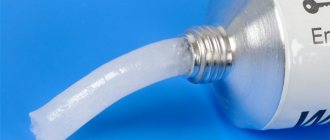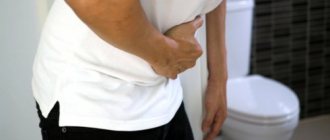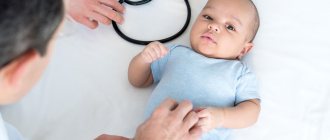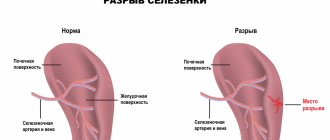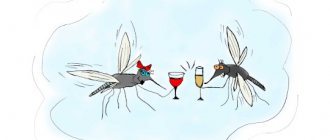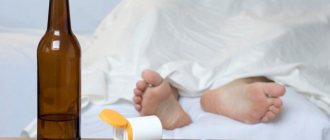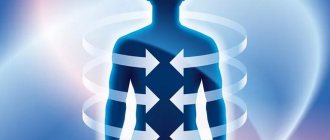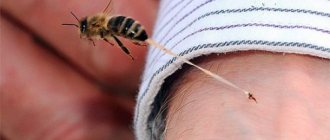A large number of microorganisms living in the environment also inhabit the human body. Some of them are absolutely harmless and even useful, while others, on the contrary, lead to the development of serious pathologies. There are also those that are initially useful inhabitants, but under certain conditions begin to actively reproduce, causing an inflammatory reaction.
Experts call such microorganisms opportunistic. These include enterobacteria. Their family includes Escherichia coli, Klebsiella Escherichia and others. Escherichia coli was named Escherichia coli because it was first identified by the German microbiologist Escherich. The bacterium lives for a long time in a humid environment, as well as in refrigerators and hospital conditions.
It is found in water bodies, on tree leaves, household items, and in the soil. Neutralization occurs after boiling and treatment with disinfectant solutions. The types of E. coli are quite diverse. They are grouped into several main groups that can affect the intestines. They are an integral part of the normal digestive process and microflora.
The pathological activity of these bacteria manifests itself as a result of infection. Some types of these microorganisms can cause severe gastrointestinal and genitourinary disorders. Others are non-pathogenic, that is, they do not cause the development of infectious diseases.
Varieties
The overwhelming number of E. coli do not cause harm to the body. They learned to coexist together, benefiting each other. The intestine is the main reservoir for opportunistic strains of Escherichia coli.
Important! Escherichia coli is the collective name for a group of microorganisms that includes hundreds of microorganisms.
Under the influence of certain factors, the normal content of E. coli is reduced, as a result of which the vacated space is populated by pathogenic microorganisms. This may occur due to the following reasons:
Signs of an intestinal infection in a child
- frequent viral diseases;
- underdevelopment of lymphatic structures in young children;
- emotional and physical fatigue;
- age-related changes;
- weakened immunity;
- bad habits: smoking, alcoholism, drug addiction.
E. coli is divided into two main types: pathogenic microorganisms, non-pathogenic microflora. The first type, in turn, includes:
- enteropathogenic (strains cause diarrhea, especially in infants);
- enteroinvasive (penetrate into the deeper parts of the intestine, causing bloody diarrhea);
- adhesive. Attached to the intestinal mucosa, interfering with the absorption of nutrients;
- hemorrhagic. Antibodies are released that damage cellular structures;
- toxigenic (the bacterium attacks the mucous membrane of internal organs and blood vessels) and other bacteria. Non-pathogenic microorganisms are lactose-positive and lactose-negative.
Important! The bacteria have the shape of a rod, which is slightly rounded on one side. Some rods have flagella, due to which they can move.
Only pathogenic strains can cause poisoning of the body. Normally, E. coli ensures normal activity of the entire gastrointestinal tract and helps limit the proliferation of pathogens. Pathogenic rods after penetration into the body provoke the appearance of toxic substances. As a result, severe intoxication of the body develops.
Ultraviolet rays destroy bacteria in just a few minutes. They can remain viable for some time in water, soil, excrement, and tolerate drying well. Escherichia coli is located mainly in the large intestine. There it participates in such processes as the digestion of proteins and carbohydrates, the synthesis of biotin, as well as vitamins K and group B, the breakdown of oxygen, the processing of lactose, the processing of acids, cholesterol, and bilirubin.
Diagnosis of intestinal infection
Diagnosis of intestinal infections is carried out on the basis of the clinical picture of the disease and the results of laboratory tests. The difficulty of diagnosis lies in the similarity of the manifestations of intestinal infection with some gastrointestinal diseases, for example, acute appendicitis, lactase deficiency, poisoning, etc. That is why parents should not exercise excessive independence in diagnosing and treating pathology. You should entrust the child’s health to a qualified specialist with many years of experience in gastroenterology. After a thorough examination of the child and collection of the necessary anamnesis (medical history), the doctor sends the little patient for laboratory testing:
- stool culture to determine causative bacteria and their sensitivity to antibiotics;
- bacteriological culture of vomit contents;
- general clinical blood test;
- scatological analysis of stool.
To exclude pathologies of the gastrointestinal tract, ultrasound, MRI or CT may be additionally prescribed.
Routes of infection
Epidemiological outbreaks usually occur during the summer in warm countries, especially during the tourist seasons. E. coli is transmitted in two main ways:
- fecal-oral. In contact with soil, water, agricultural crops;
- contact-household. Most often, infection occurs in groups.
After the birth of a child, E. Coli enters the intestines along with food during the first forty hours. Having colonized the thick section, it remains in it throughout its life. Experts associate the penetration of pathogenic microorganisms with failure to properly comply with hygiene rules. Eating unwashed vegetables and fruits, raw milk, poorly fried fish or meat can lead to the development of intestinal pathology.
This is why E. coli symptoms often appear in children than in adults. Due to their age, children do not fully understand the importance of maintaining hygiene measures. Hemolyzed E. coli can be found on raw vegetables, especially if they are grown on land that is fertilized with manure. If you do not wash your hands after handling an infected animal, there is a risk of infection.
If hygiene rules are not followed, Eschirichia coli easily enters the urinary system, causing the development of cystitis. The risk of such infection is especially high in women. When penetrating the genitals, the stick can cause colpitis - inflammation of the vagina. In men, it can cause prostatitis.
Prevention of intestinal infection
In order to prevent the development of intestinal infection, parents must adhere to the following preventive rules:
- From a very early age, develop primary personal hygiene skills in your child.
- Carefully monitor the cleanliness of the child’s hands and ensure the cleanliness of the objects surrounding the baby.
- Drink only clean water.
- Carefully process fruits and vegetables before giving them to your child.
- Regularly wet clean your home with disinfectants.
If your baby does develop an intestinal infection, you should immediately seek medical help from a specialist. Doctors at the SM-Doctor clinic for children and adolescents will help you quickly identify the disease and prescribe the necessary treatment.
Symptoms
Signs of escherichiasis largely depend on which strains have affected the gastrointestinal tract (GIT). If the body is affected by enterotoxigenic bacilli, the symptoms of intoxication are mild. The disease occurs acutely with increasing weakness, fatigue and dizziness. At the same time, the temperature may even remain within normal limits. The abdomen is swollen, cramping pain is noted.
Symptoms of escherichiosis depend on which strain the body is infected with. The photo shows the main strains of pathogenic E. coli
Then diarrhea, nausea, and vomiting appear. Escherichiosis caused by enterotoxigenic bacilli is called cholera-like, since its manifestations are similar to the clinical course of mild cholera. If the disease is caused by enteroinvasive bacilli, general intoxication symptoms come to the fore. A person is worried about weakness, chills, headaches, and fever. After some time, cramping pain appears, as well as diarrhea mixed with blood and mucus.
Enteropathogenic eschirichiosis in newborns can become systemic in the form of sepsis. Enterohemorrhagic bacilli cause symptoms of enterocolitis. Loose stools with blood appear, as well as abdominal pain and tenesmus. The incubation period ranges from one to five days. Intestinal infection is characterized by an increase in symptoms of intoxication.
The main signs of the development of pathological activity of E. coli include:
- weakness and malaise;
- nausea and vomiting;
- diarrhea;
- feces become yellow;
- bloating;
- drowsiness and apathy;
- lack of appetite;
- pain in the navel area.
Gastrointestinal tract
Most often, E. coli affects the digestive tract. This manifests itself in the form of diarrhea up to ten to twelve times a day. Patients also experience a false urge to defecate. The feces take on a yellow appearance mixed with mucus and a small amount of foam. Usually the disease lasts from three to six days. Children under one year of age experience abdominal pain, increased gas formation, nausea, regurgitation, and drowsiness.
Infection with enterotoxigenic bacilli is also called traveler's diarrhea. Most often it bothers people who are in a different climate zone. The illness usually lasts only a few days and manifests itself in the form of diarrhea, pain in the stomach, fever, nausea, vomiting, lethargy, and headache.
urinary system
Pathogenic strains can enter the urinary system in several ways:
- failure to comply with personal hygiene rules. Pathogens can enter the vagina and urethra from the anus. Microorganisms can also spread from an inflamed vulva or vagina;
- upward path. The pathogen enters the upper sections through the urinary canals;
- hematogenous infection. Escherichia coli spreads through the circulatory system;
- lymphogenous pathway, that is, through the lymphatic vessels.
This may be caused by wearing tight-fitting underwear. As a result, the perineum sweats and pathogenic microorganisms easily move from the anorectal area to the vagina or perineum. Anal sex is another cause of infection. If the penis first penetrates the anus and then the vagina, it thus transfers microflora from the urinary system to the genital area.
Experts also identify unfavorable factors that contribute to urine retention in the kidneys or bladder: strictures, stenoses, and tortuosity of the urethra. This also includes the period of pregnancy, when the enlarged uterus puts pressure on the bladder.
Cystitis caused by Escherichia coli is manifested by the following symptoms: frequent urination, a feeling of incomplete emptying of the bladder, pain in the lower abdomen, a burning sensation during urination. White flakes and sediment will appear in the urine, and it will acquire an unpleasant odor. Blood is also often found. Patients complain of general malaise, weakness, and fever.
Nausea and vomiting may occur. Treatment of E. coli largely depends on which part of the urinary system was affected, as well as what form and course the pathological process took. To combat the disease, antibiotics, uroseptics, vitamins, analgesics, and antipyretics are used.
In a throat swab
Patients are bothered by sore throat and constant sore throat. Treatment includes the use of antibiotics and diet. Fermented milk products must be included in the diet.
In a smear from the cervical canal
E. coli enters the cervical canal from the intestines after defecation. In the absence of proper hygiene and frequent wearing of synthetic underwear, the risk of infection increases significantly. A woman may not be aware of infection by microorganisms for a long time. And the first symptoms may be perceived as manifestations of thrush. The bacteria cause itching, irritation and redness of the vulva and vagina.
Literature
- Florian Hitzenbichler, Michaela Simon, Thomas Holzmann, Michael Iberer, Markus Zimmermann, et. al.. (2018). Antibiotic resistance in E. coli isolates from patients with urinary tract infections presenting to the emergency department. Infection
.
46 , 325-331; - Antibiotics and antibiotic resistance: from antiquity to the present day;
- Model organisms: lambda phage;
- 12 methods in pictures: genetic engineering. Part I, historical;
- Molecular biology;
- At the origins of the genetic code: soul mates;
- Biotechnology. Genetic Engineering;
- Anna Kaznadzey, Pavel Shelyakin, Evgeniya Belousova, Aleksandra Eremina, Uliana Shvyreva, et. al.. (2018). The genes of the sulphoquinovose catabolism in Escherichia coli are also associated with a previously unknown pathway of lactose degradation. Sci Rep
.
8 ; - CRISPR systems: immunization of prokaryotes.
In men
The reason for taking a smear in men may be complaints of pain and cramping in the urethral area, the appearance of pathological discharge from the urethra, redness of the external os of the urethra, a rash on the penis, pain during intimacy. With a mild form of infection, male thrush occurs. The reason for this may be unprotected sex or poor hygiene.
To prevent candidiasis, you should use gels for intimate areas and be sure to shower after sexual intercourse using bactericidal agents. The doctor may prescribe a smear even if there are no complaints. The study is indicated when examining a couple regarding childlessness, before urological manipulations, as well as identifying vaginitis in a sexual partner.
If E. coli was detected by chance and nothing bothers the man, such carriage does not require specific treatment. If signs of inflammation were detected in the smears, it is additionally necessary to do a PCR test for hidden infections, as well as culture of the discharge.
E. coli can cause prostatitis
How is Escherichiosis treated?
Children with mild illness are usually treated at home, where they are visited by a pediatrician from the clinic. Patients with moderate to severe disease are hospitalized, as well as usually newborns, since their doctors must monitor them constantly.
Typically, the pediatrician prescribes rehydration therapy for the patient to replenish fluid and electrolyte levels, symptomatic therapy to alleviate his condition, probiotics, enterosorbents, enzymes and sometimes immunoglobulins. Antibiotics are prescribed to children under one year of age and to patients in moderate to severe condition.
As with any intestinal disorder, diet is very important. Infants need to be fed in smaller portions, but more often than usual. Gradually, the volume of each feeding increases, as does the interval between them.
The prognosis is favorable in most cases.
MAKE AN APPOINTMENT PRICES
In children
The most common cause of infection in childhood is the consumption of dirty vegetables or vegetables, as well as unsuitable drinking water. Infection of newborns can occur during artificial feeding through poorly washed dishes or formula. Unsanitary living conditions are another provoking factor for escherichiosis.
The disease is especially dangerous for infants. Active reproduction of pathogens is fraught with severe dehydration. There is a possibility of death. The incubation period lasts from several hours to eight days. The stool becomes liquid with a yellowish or even orange tint.
Vomiting, bloating, rumbling in the stomach, pain, and an increase in body temperature appear. Dehydration is indicated by dry skin and mucous membranes, rare urination, crying without tears, and weight loss. The child must comply with bed rest and dietary nutrition. Children under two years of age with moderate severity should be treated in a hospital setting.
Treatment of intestinal infection
The treatment tactics for intestinal infections directly depend on the type of causative agent of the disease, the severity and the presence of concomitant disorders in the body.
When treating pathology, doctors set themselves several tasks at once: to eliminate the onset of infection, prevent dehydration, relieve unpleasant symptoms and restore the normal functioning of the child’s body. For this purpose, the child is prescribed the following groups of medications:
- glucose-saline solutions for oral rehydration;
- antibiotics (for bacterial forms of the disease);
- antifungal drugs (for fungal infections);
- intestinal antiseptics;
- antipyretics;
- sorbents to prevent intoxication of the body.
In addition to drug therapy, parents need to provide the patient with dietary nutrition that is gentle on the child’s stomach and intestines.
Heavy foods can aggravate the condition and delay recovery. In case of an intestinal infection, it is necessary to reduce the amount of food consumed, drink plenty of water, and give preference to pureed or liquid easily digestible food. Fatty, fried, smoked and highly salted foods, fatty meats, fruits, dairy products, juices and carbonated drinks are excluded.
Pregnancy period
The period of gestation creates favorable conditions for the active growth of pathogenic microorganisms. The female body experiences physiological stress, which leads to a natural decrease in the immune system.
Important! When actively multiplying, E. coli release toxic substances that damage cells and tissues.
Eschirichiosis during pregnancy can cause dangerous consequences. Bacteria can lead to early rupture of amniotic fluid. This can lead to miscarriage or premature birth. From the vagina, pathogens can penetrate the placental barrier into the fetal bloodstream. This can lead to congenital pathologies. E. coli often causes meningitis in children.
The baby is infected while passing through the birth canal. This can lead to developmental delays or even death. It is simply impossible to do without antibiotics in the treatment of E. coli. Gynecologists always select safe antibacterial agents for pregnant women. Infusions of medicinal herbs for washing will provide auxiliary assistance. You can use calendula, string, chamomile.
Pregnant women are at risk for infection
